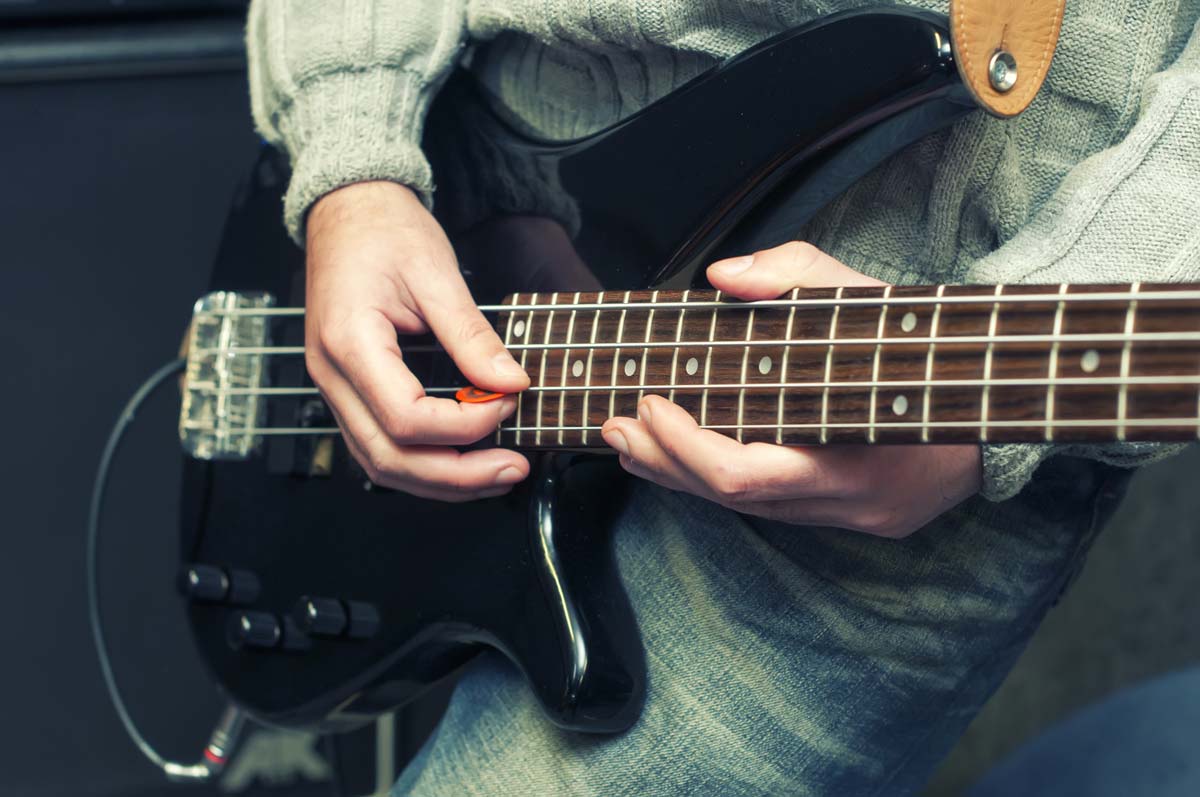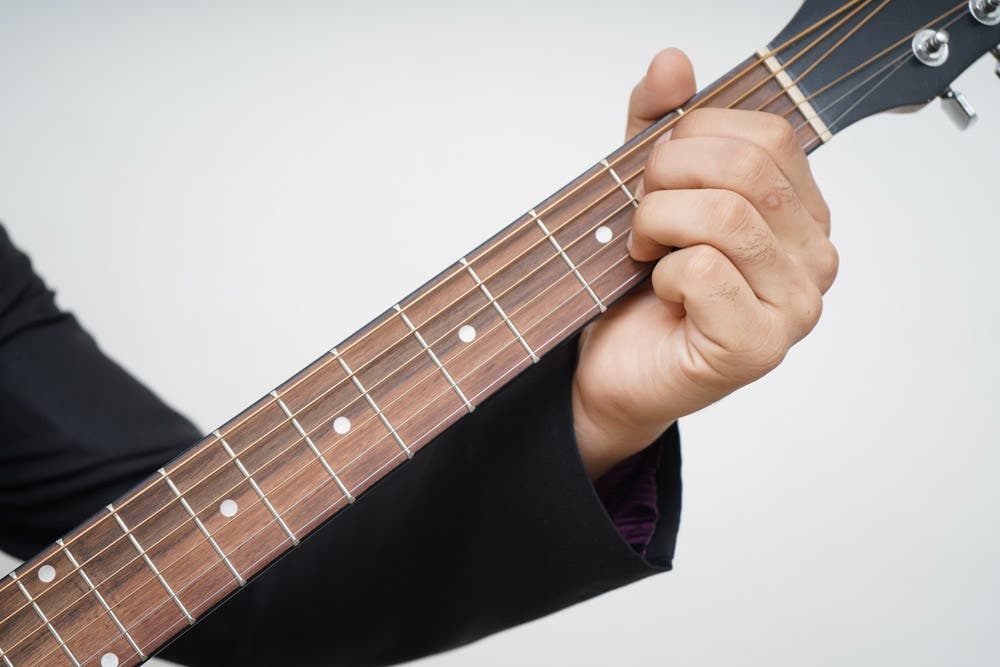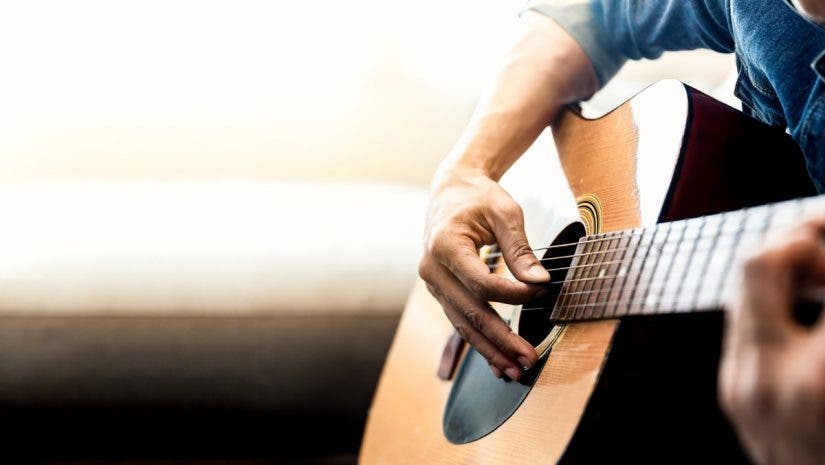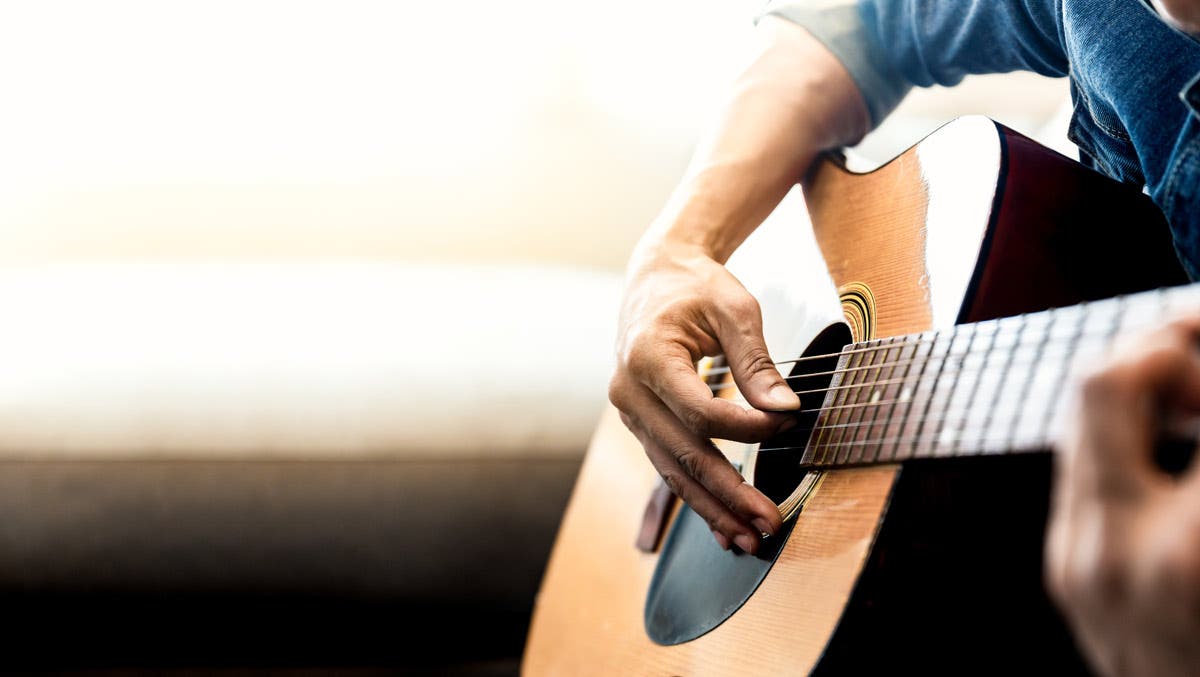Maybe it’s because so many guitarists are self-taught, or maybe it’s rock music’s longstanding anti-authoritarian stance, but guitarists are notorious for not knowing how to read music, let alone guitar tabs. Even many guitar teachers today focus on picking technique and ear exercises, for example, rather than music reading in their guitar lessons.
For guitarists who are unable or unwilling to learn to read traditional music (called “standard notation”) on sheet music, there is an easy and intuitive solution—guitar tablature notation, usually called “tab” for short. If you’re wondering if and how you can teach yourself to read tabs, the good news is you can. We’ll provide easy tips for reading tabs so you, too, can play along with all your favorite songs.
What’s the difference between standard notation and guitar tabs?
To the uninitiated, the staves of tab and standard notation (the groups of lines that we write notes upon) look almost identical. A standard notation staff contains five lines and four spaces, with specific positions on these lines and spaces for each note. The standard notation also specifies time signatures on its left side and has vertical lines/bars dividing the staff into measures, usually about four per line.
Guitar tabs frequently use time signatures and measure divisions, too. It’s their horizontal staff lines that set them apart from standard notation. Tab staves have six lines, each representing a string for the guitar. Instead of traditional notes written onto the staff, guitar tabs contain small numbers, which represent specific frets where guitar players place their fingers on the fretboard. Notes are never written over spaces in guitar tabs.
Tab notation has one distinct advantage over standard notation: it shows you exactly where you should finger a given note. A high “F” on a piano will always be one specific key, but this is not the case on guitar. When standard notation gives you that high “F” on guitar, for example, it doesn’t tell you if you should play it on the first fret of the first string (the thinnest string), sixth fret of the second string, or tenth fret of the third string.

Can I teach myself to read tab?
Especially if you’ve already learned the basics of hand position, picking, strumming, and fretting, tab is very easy to learn. The strings of the guitar are designated from the bottom up, meaning that the bottom line on the staff represents your low “E” string (thinnest string), and the top line is your high “E” string (thickest string).
Every single note you play is depicted with a number: zero means an open string, one is the first fret, and so on. Play the notes in the order you read them from left to right. Here’s an E pentatonic scale from low to high:
—————————————–0–3——————————————————————————————————————–0–3——————————————————————————————————————–0–2——————————————————————————————————————-0–2——————————————————————————————————————-0–2——————————————————————————————————————–0–3—————————————————————————————————————–
You can write chords with tab, too. Chords are depicted by “stacking” numbers on top of each other. Here’s an open G-chord:
–3—
–0—
–0—
–0—
–2—
–3—
Tab also uses simple and intuitive abbreviations for specific techniques. When you see a slur sign (an arched line over two or more notes), you may also see an “H” for a hammer-on, “P” for pull-off, “B” for bend, or a straight line between notes for a slide. You may see “P.M.” as well, which indicates palm muting.
So, do I even need to learn standard music notation?
Many great guitarists have gone their entire careers without learning how to read standard notation. But there are a few drawbacks to relying on just tabs for your musical notation. Precise rhythms are difficult to depict. If a composer is trying to give instructions for dynamics (how loud or soft a note is), they’ll also probably have to fall back on standard notation symbols and instructions.
Guitar tabs work best when we use our ears along with our eyes. Listen to a song repeatedly to get the details of rhythm and dynamics. Then use guitar tabs to show you exactly where your fingers go when you play guitar.

Is tablature only for guitar?
Tab isn’t just for acoustic or electric guitar. Its advantages apply to about any fretted and stringed instrument, whether they have six strings, more, or fewer. Some of the earliest tab sheets were written for lute back in the 1300s. Ukulele, bass guitar, mandolin, and more all work well with tab sheets, as long as their staves contain the same amount of lines as those instruments have strings.
One final note: Because guitar tabs are so easy to read and write, there are a lot of bad ones out there. Even if you use a pay site, don’t assume that a tab arrangement will sound exactly like a recorded song. Guitar tabs are always best treated as guidelines or suggestions for what to play, rather than end-all definitive works. Now start practicing!






